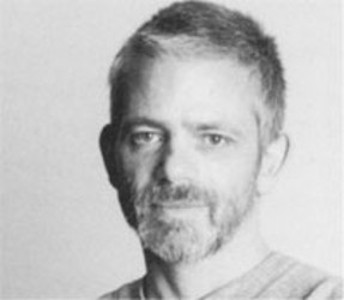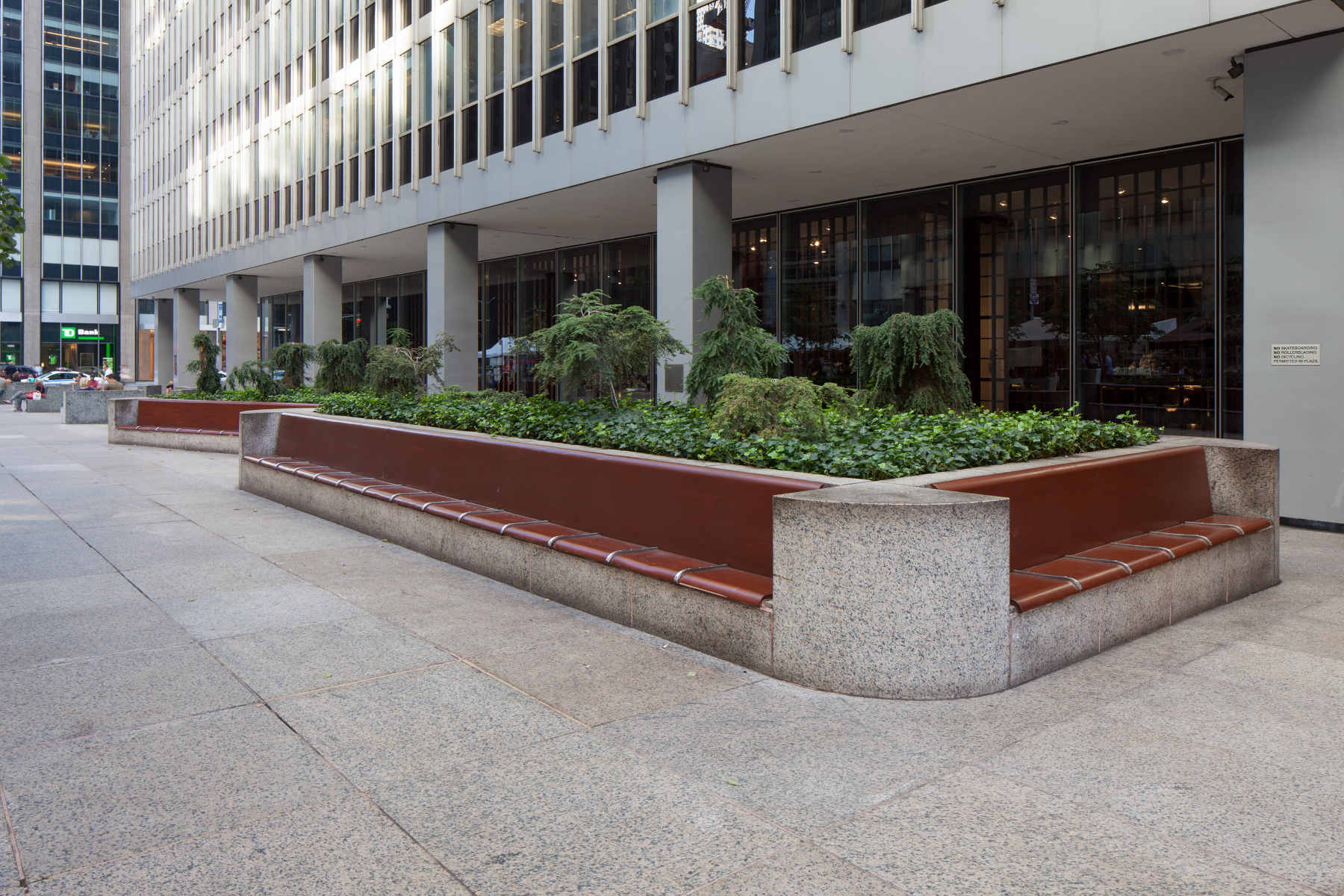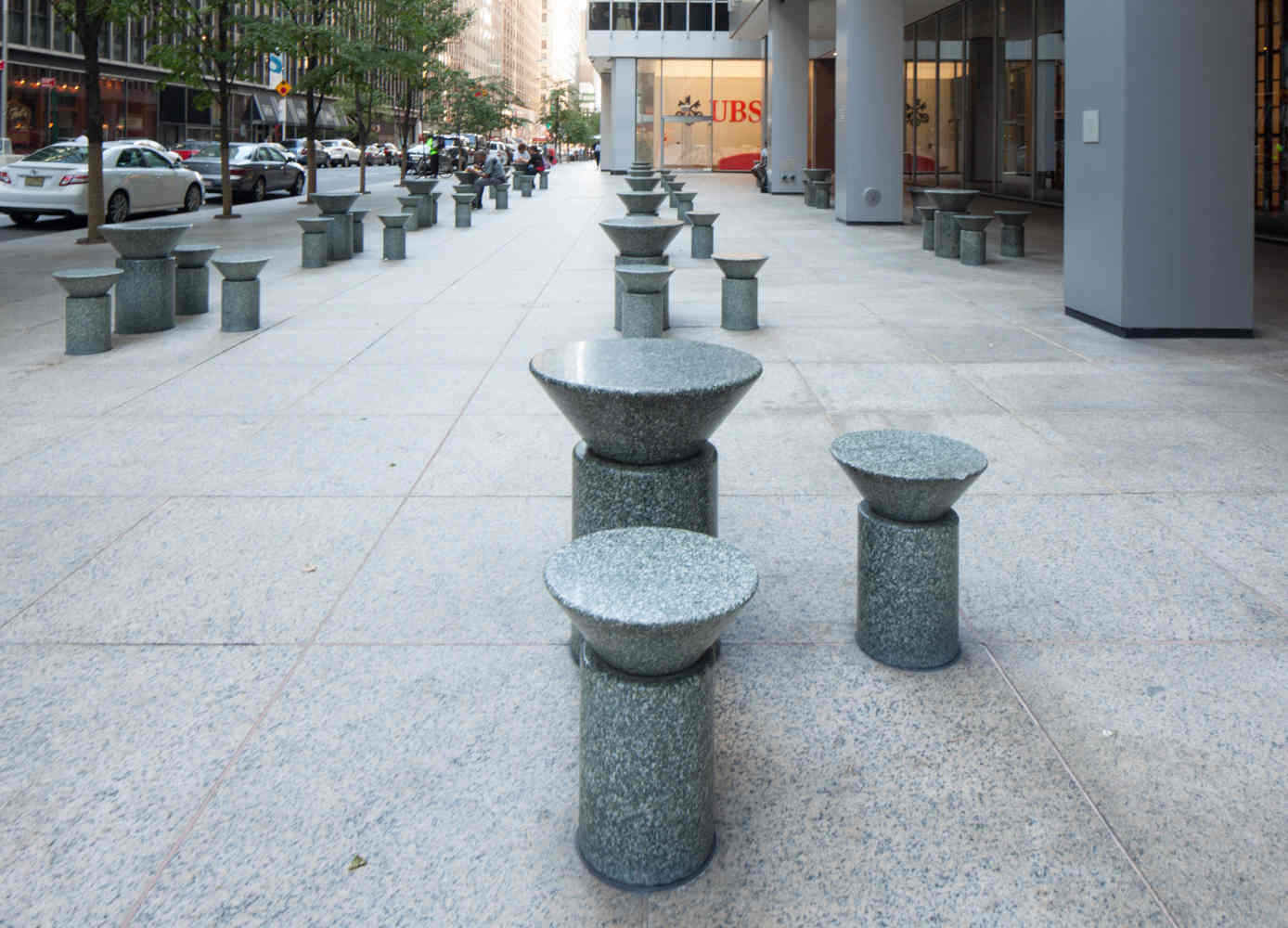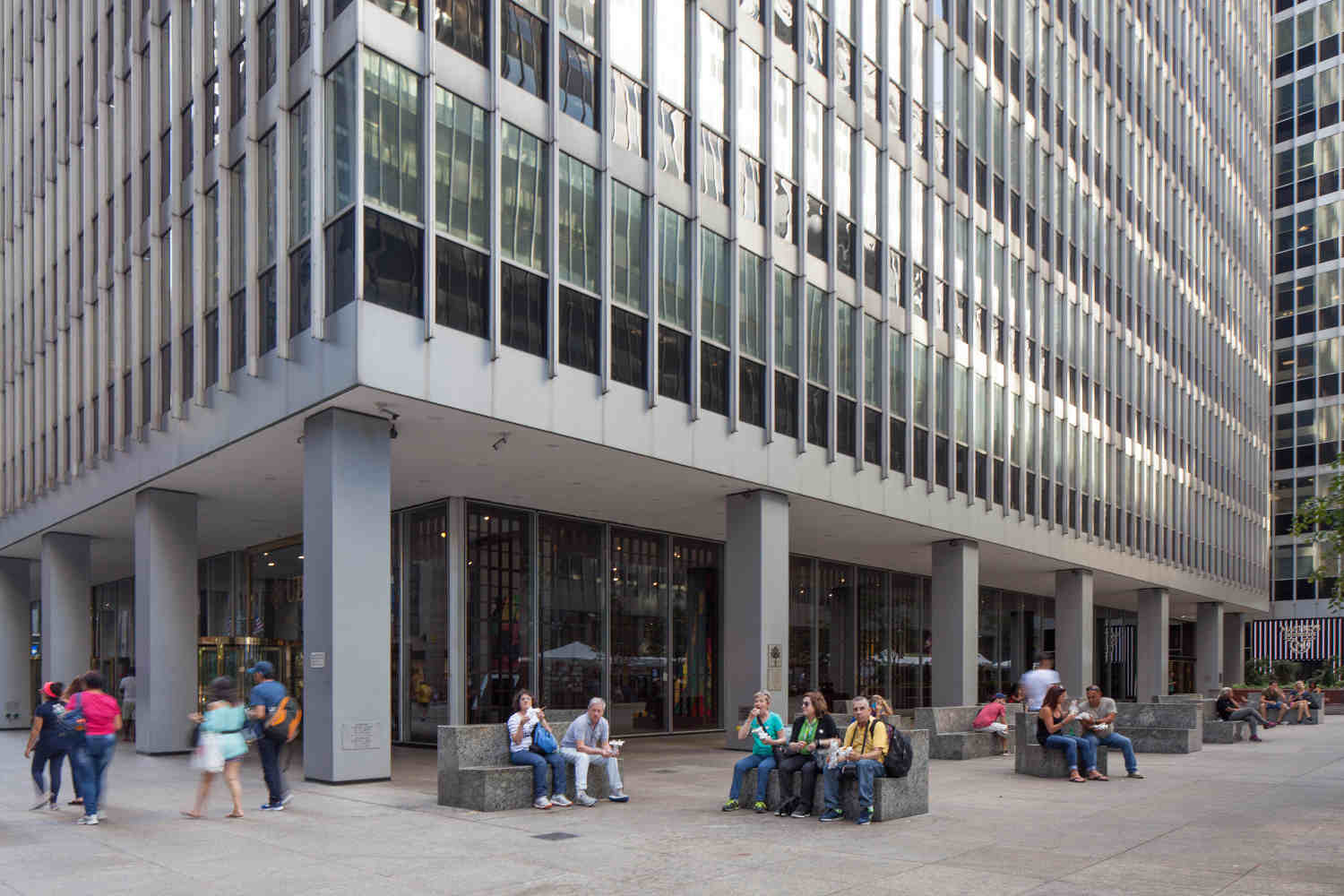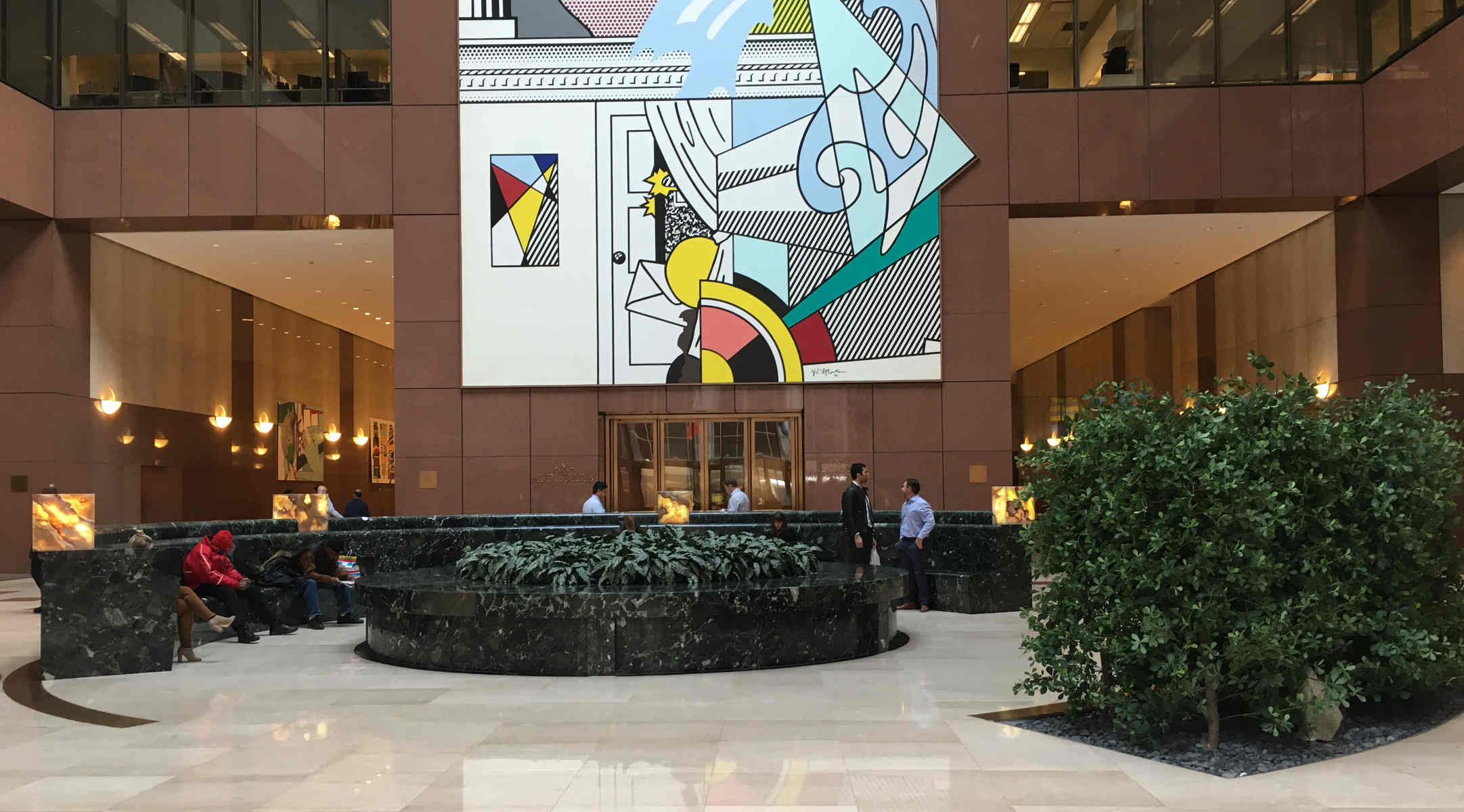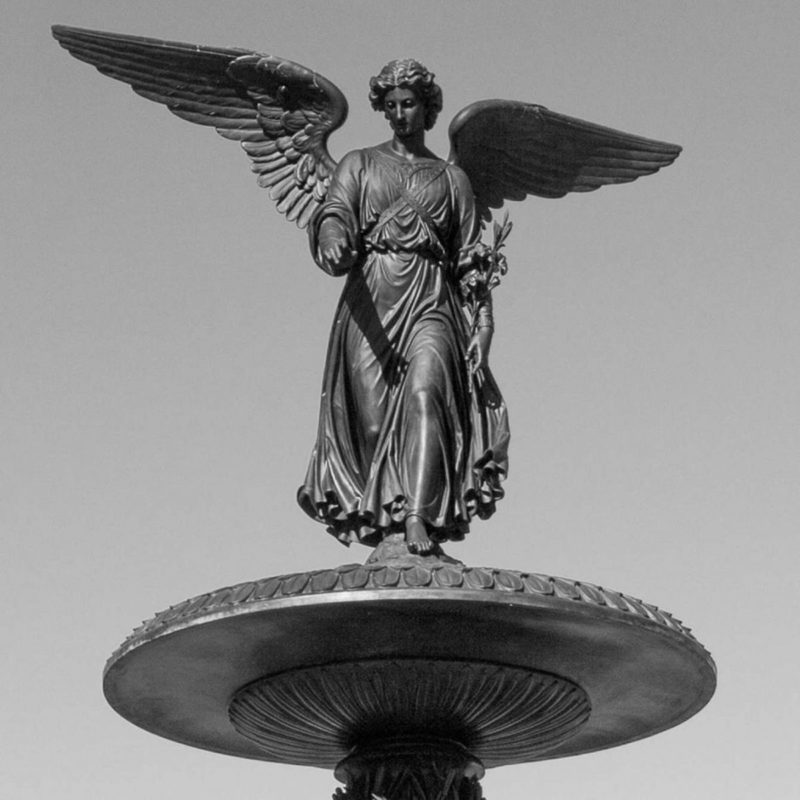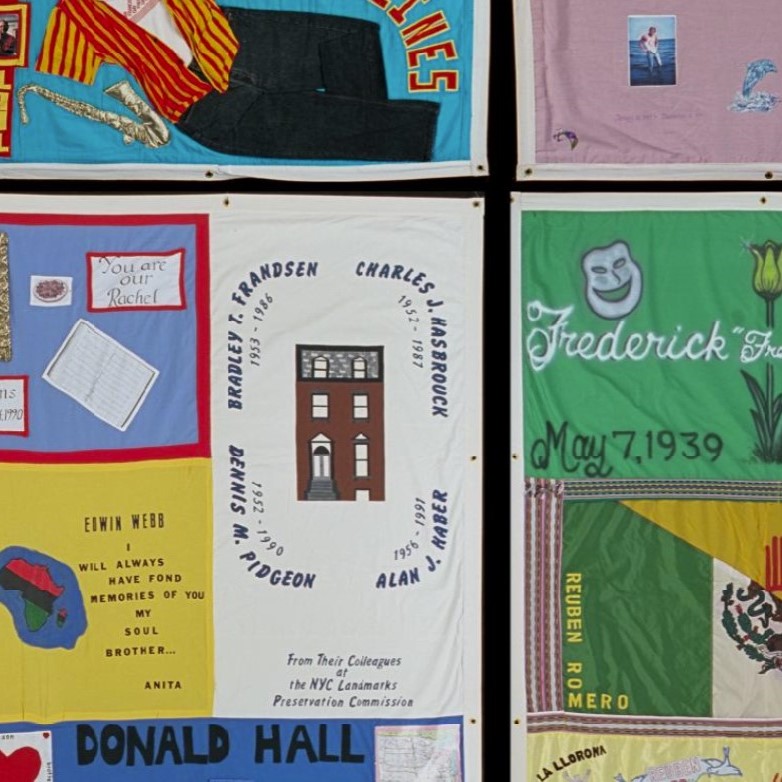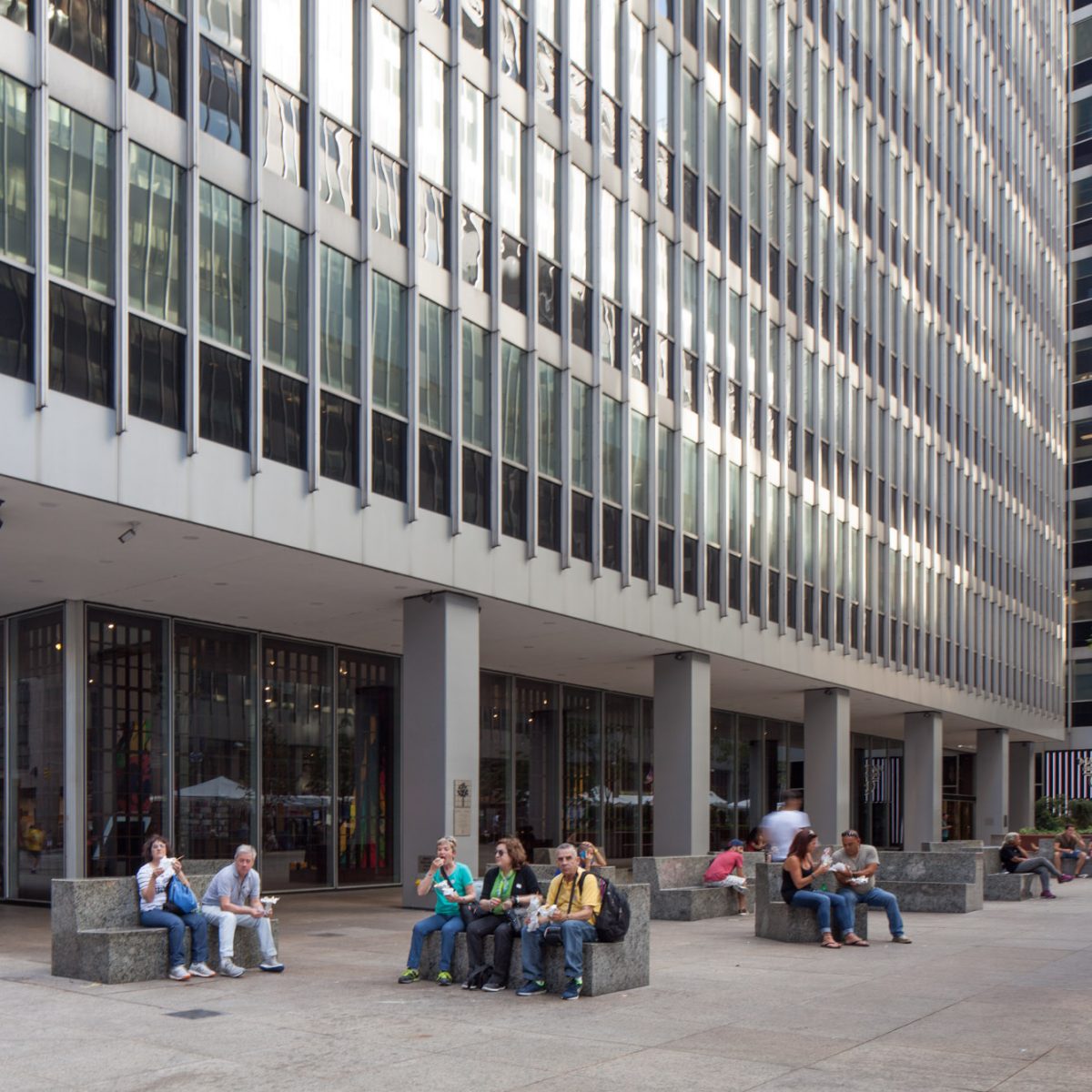
Scott Burton & the Equitable Center
overview
Scott Burton, a major figure in the New York art scene of the 1970s and 1980s, specialized in the creation of public installations that combined furniture design and sculpture.
Among his major works are three at the former Equitable Center.
History
The two buildings that comprise the Equitable Center (now AXA) were planned in the 1980s to contain significant works of public art. Three of these were by Scott Burton (1939-1989).
Burton was an art critic and performance artist in the 1960s and 1970s, and took full advantage of the city’s gay underground nightlife. In the mid-1970s, Burton turned to furniture design and this soon developed into what he called “pragmatic sculptures” and “sculpture in love with furniture.” As the curators of a 2024-25 Burton retrospective in St. Louis note, “chairs were especially important to Burton because of how they formally resemble the human body.” This is especially evident in “Two-Part Chair” (1983/1986, Robert T. Webb Sculpture Garden, Dalton, GA), with its two mutually supportive granite blocks. Curator Jess Wilcox describes the piece:
At first glance, the sculpture appears abstract. But when viewed from the side the two shapes seem to resemble a pair of bodies in a sexual embrace….[It] is one of Burton’s most explicitly queer designs.
In the 1980s, Burton focused on creating public art pieces, completing about two dozen in the United States and in Europe before his death from AIDS at the age of 50. All of these works serve a social function, inviting interaction with the public. They bridged the divide between high art and utilitarian furniture. Several have been destroyed. The Equitable Center had three works by Burton. In the building’s Seventh Avenue lobby Burton installed Atrium Furnishment (1984-85), a 40-foot semi-circular bench of marble with onyx lights set around a circular table with a fountain (destroyed). The arc of the bench was echoed by a small grove of conifer trees. Near Sixth Avenue, alongside what was then the Paine Webber Building, Burton designed two installations (1985-86). Urban Plaza South, on 51st Street, includes a pair of triangular granite planters with wood benches and small granite mushroom-like tables, each with three stools of similar design. Similar planters appear at Urban Plaza North on 52nd Street, where they are joined by austere granite chairs and couches.
[Scott Burton’s] work balanced stubbornly and elegantly between art and furniture while evolving into a new kind of public sculpture.
Burton had two other installations in New York City. In Lower Manhattan he designed the long granite bench on the plaza in front of the World Financial Center (now Brookfield Place; endangered). Burton’s installation of benches, ottomans, lamps, and wind vanes of steel and wood enlivens the fishing piers in Sheepshead Bay, Brooklyn (destroyed; pieces salvaged).
Entry by Andrew S. Dolkart, project director (March 2017; revised February 2025).
NOTE: Names above in bold indicate LGBT people.
Building Information
- Architect or Builder: Skidmore, Owings & Merrill (Sixth Avenue building); Edward Larrabee Barnes (Seventh Avenue building)
- Year Built: 1959-60 (Sixth Avenue building); 1986 (Seventh Avenue building)
Sources
Nancy Princenthal, “High Style, Clear Form, Sharp Edge,” Art in America, March 11, 2013.
Roberta Smith, “Scott Burton, Sculpture Whose Art Verged on Furniture, Is Dead at 50,” The New York Times, January 1, 1990. [source of pull quote]
Jess Wilcox, curator, “Scott Burton: Shape Shift” [exhibition text], Pulitzer Arts Foundation, St. Louis, Missouri, 2024.
Do you have more information about this site?
This project is enriched by your participation! Do you have your own images of this site? Or a story to share? Would you like to suggest a different historic site?
